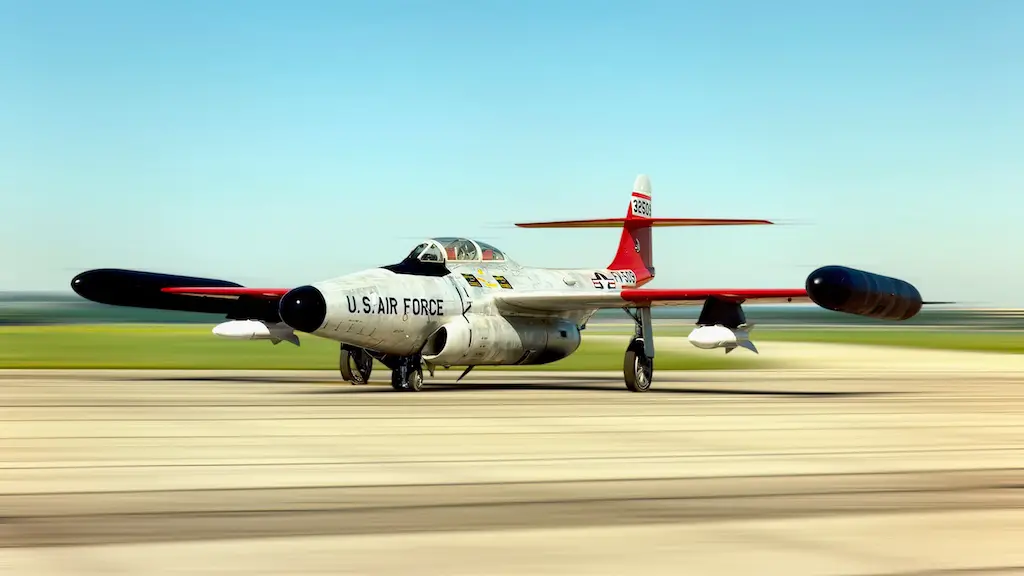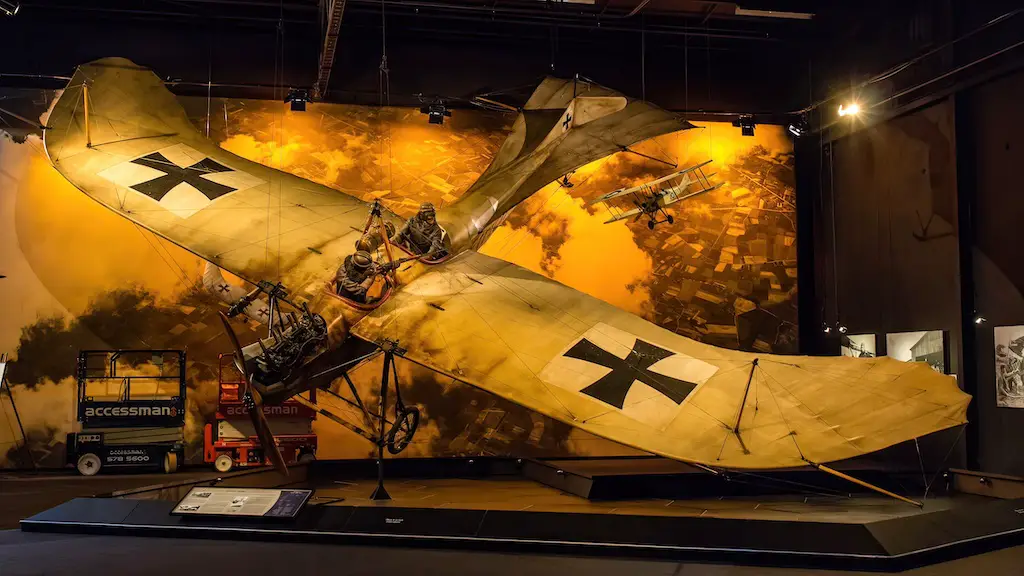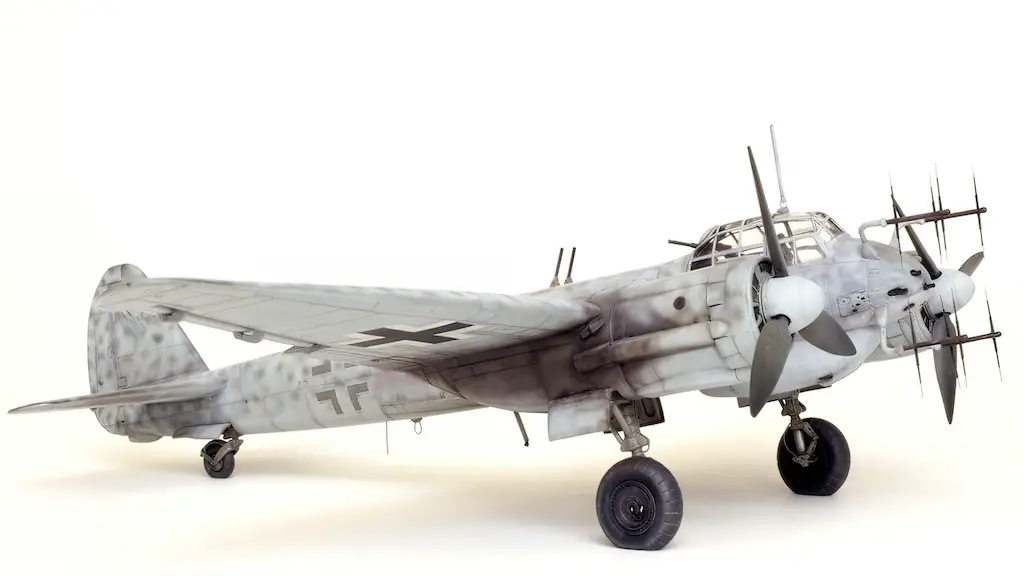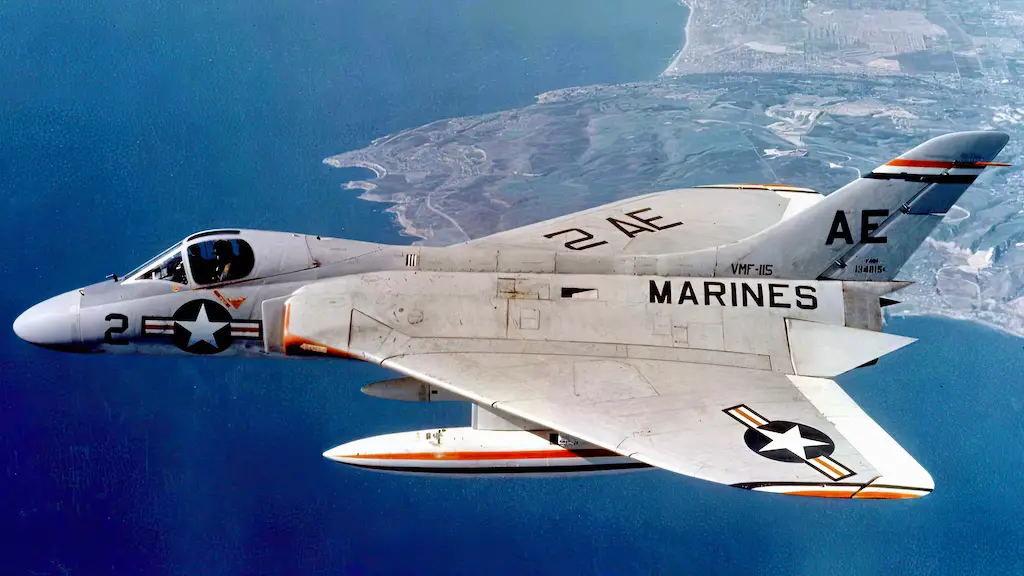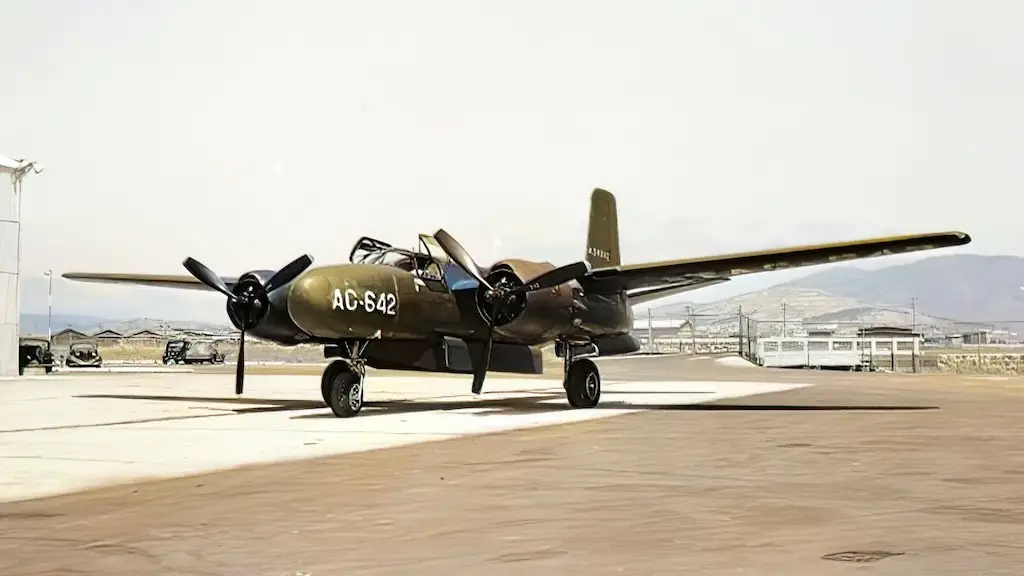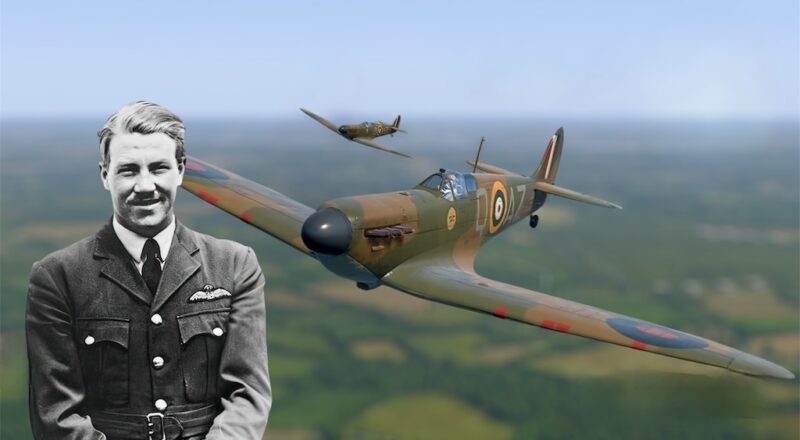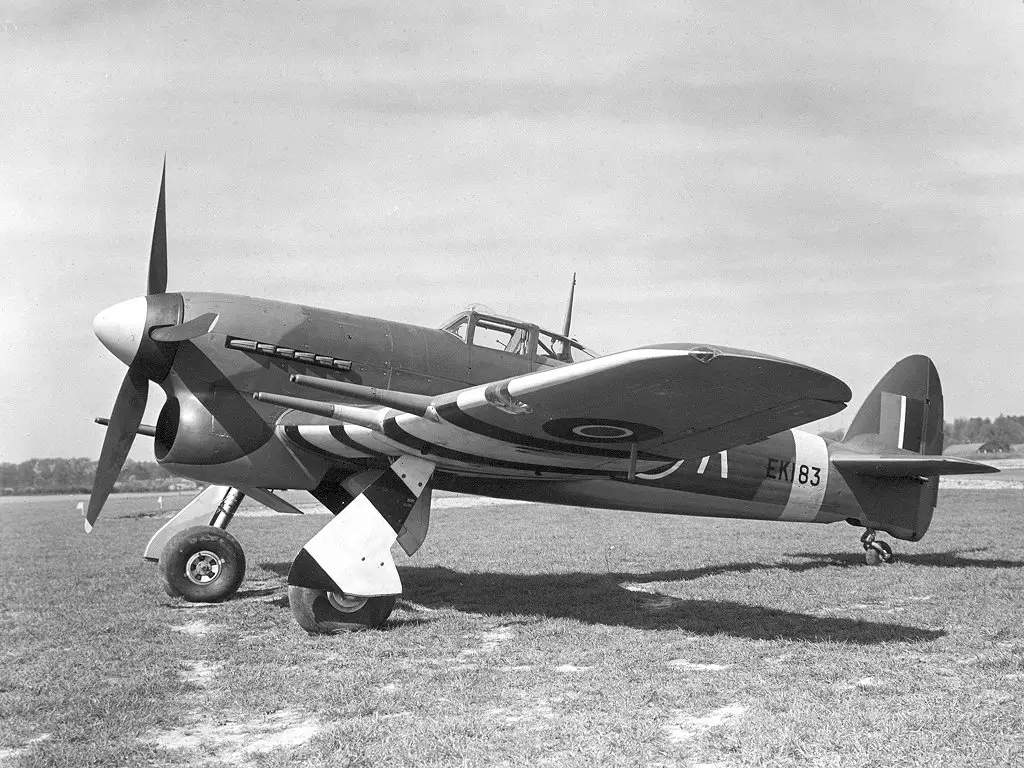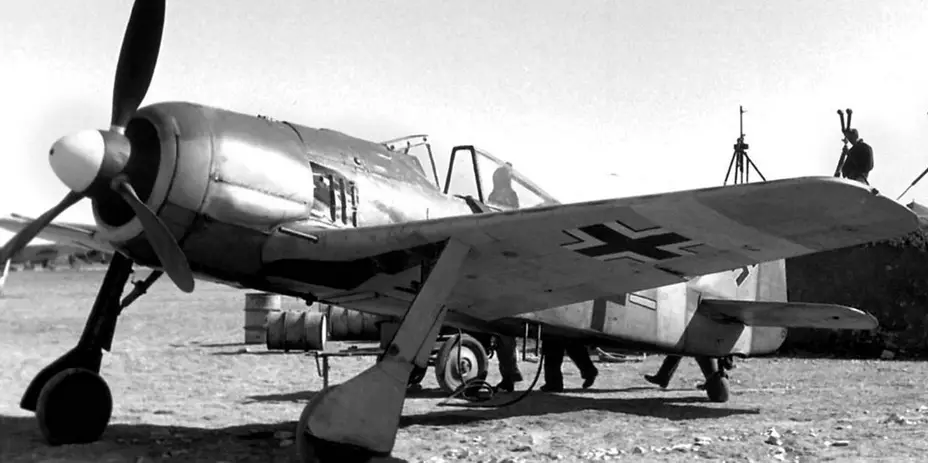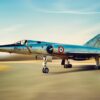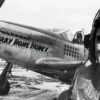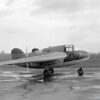The Hawker Typhoon was a versatile British fighter-bomber that played a pivotal part in the closing stages of World War II. The aircraft proved to be an irreplaceable weapon against German ground targets and also managed to score some aerial kills. Heavily armored and able to carry many bombs and rockets, it could get up close and personal with the enemy, take some hits, and continue flying.

Exhibiting its aggressive lines to advantage, Typhoon IB JP853/SA-K of No. 486 (NZ) Squadron RAF displays for the photographer during a visit to Tangmere, 27 October 1943. One of the Typhoon’s problems, especially during its first months of service, was that it was frequently mistaken for the FW190. After various experiments the identification markings shown here, consisting of 12in black and 24in white bands, were adopted
Built for ground support
Hawker Typhoon development began in the late 1930s in response to a British Air Ministry requirement for a new fighter aircraft. The Typhoon could carry many bombs and rockets to attack ground targets. It had a strong engine, heavily armored cockpit, and wings to shield the pilot from enemy fire. The first prototype of the Typhoon flew in 1940, but technical issues hampered its development.
Eventually, the engineers resolved these issues, and the Typhoon entered active service in 1942. Initially deployed in a defensive capacity, intercepting German bombers attacking Britain, they served as a deterrent. At the early stages of the aircraft’s service, it became clear that it did exceptionally well against ground targets, and it naturally adapted the ground support role.
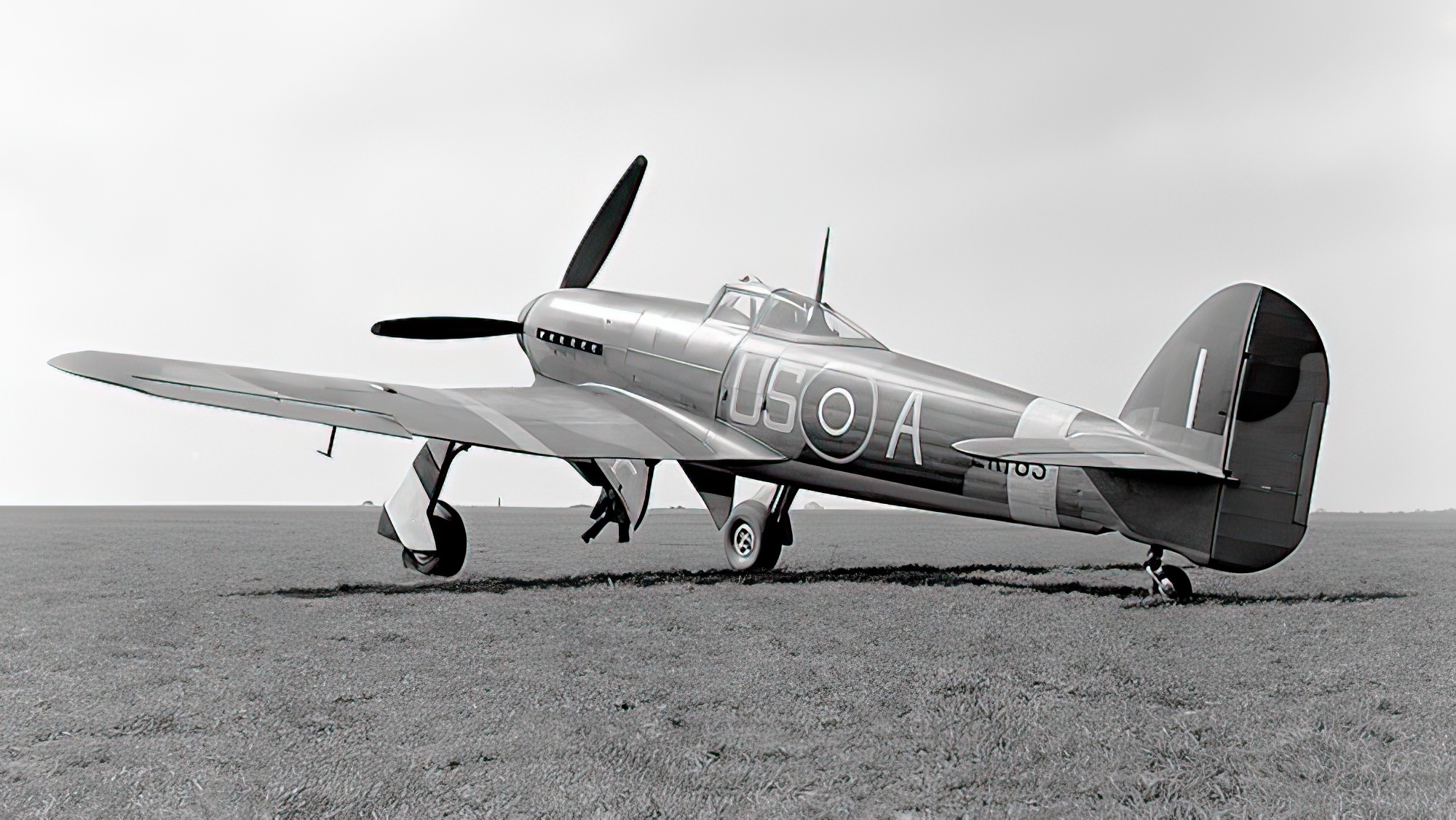
Normandy
The Hawker Typhoon played a vital role in the 1944 Allied invasion of Normandy, providing close air support for ground forces and attacking German positions behind enemy lines. During the initial phases of the invasion, Typhoons were predominantly employed in a defensive capacity, intercepting German aircraft and protecting Allied troops and ships. However, as the battle progressed, the Typhoon’s mission shifted to ground attack due to its heavy armor and powerful engine, which made it ideal for attacking enemy tanks, artillery, and other ground targets.
In August 1944, the attack on Falaise Gap was one of the most significant engagements in Normandy involving the Typhoon. Typhoon squadrons had the primary task of eliminating German tanks and disrupting enemy supply lines in the region, which they accomplished with great success, ultimately contributing to the collapse of German forces in Normandy.
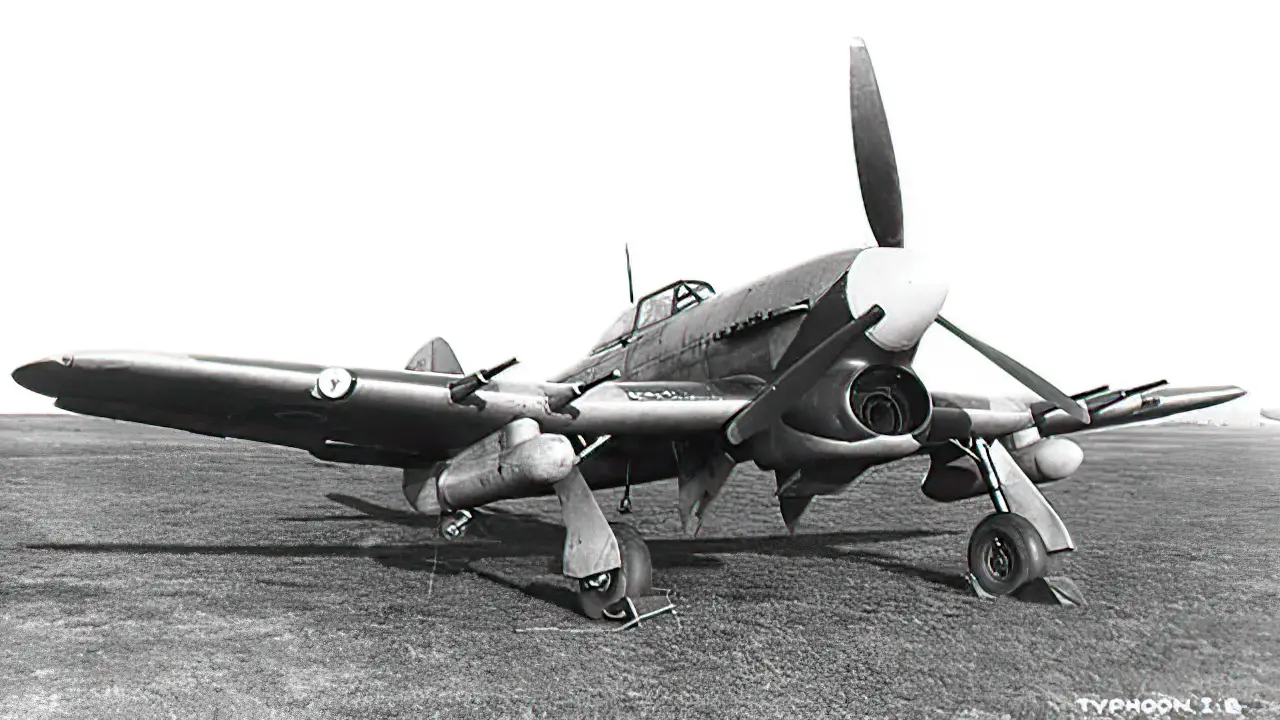
Flight Lieutenant James “Johnny” Johnson (Typhoon) vs. Unteroffizier Armin Faber (Fw 190)
On June 28, 1944, British pilot Flight Lieutenant James “Johnny” Johnson and German pilot Unteroffizier Armin Faber had one of the most well-known real-life encounters involving the Hawker Typhoon. Johnson observed a lone German Focke-Wulf Fw 190 fighter plane during a mission over the English Channel and pursued it in his Hawker Typhoon. Both aircraft engaged in a dogfight, with Johnson firing at the Fw 190 and Faber firing back. Johnson managed to hit the German plane’s fuel tank, causing it to leak fuel and compelling Faber to eject.

Faber’s landed on an Allied air base in southern England, thinking it was a German base, cemented the encounter’s notoriety. Not only did the allies capture a German pilot, but they also got their hands on a working Fw 190.
The incident was known as the “Faber affair” and caused a sensation in the media, as it was the first time a German pilot surrendered on British soil during the war. The Allies managed to examine the Fw 190 and acquire insight into German fighter tactics and technology thanks to this aircraft.
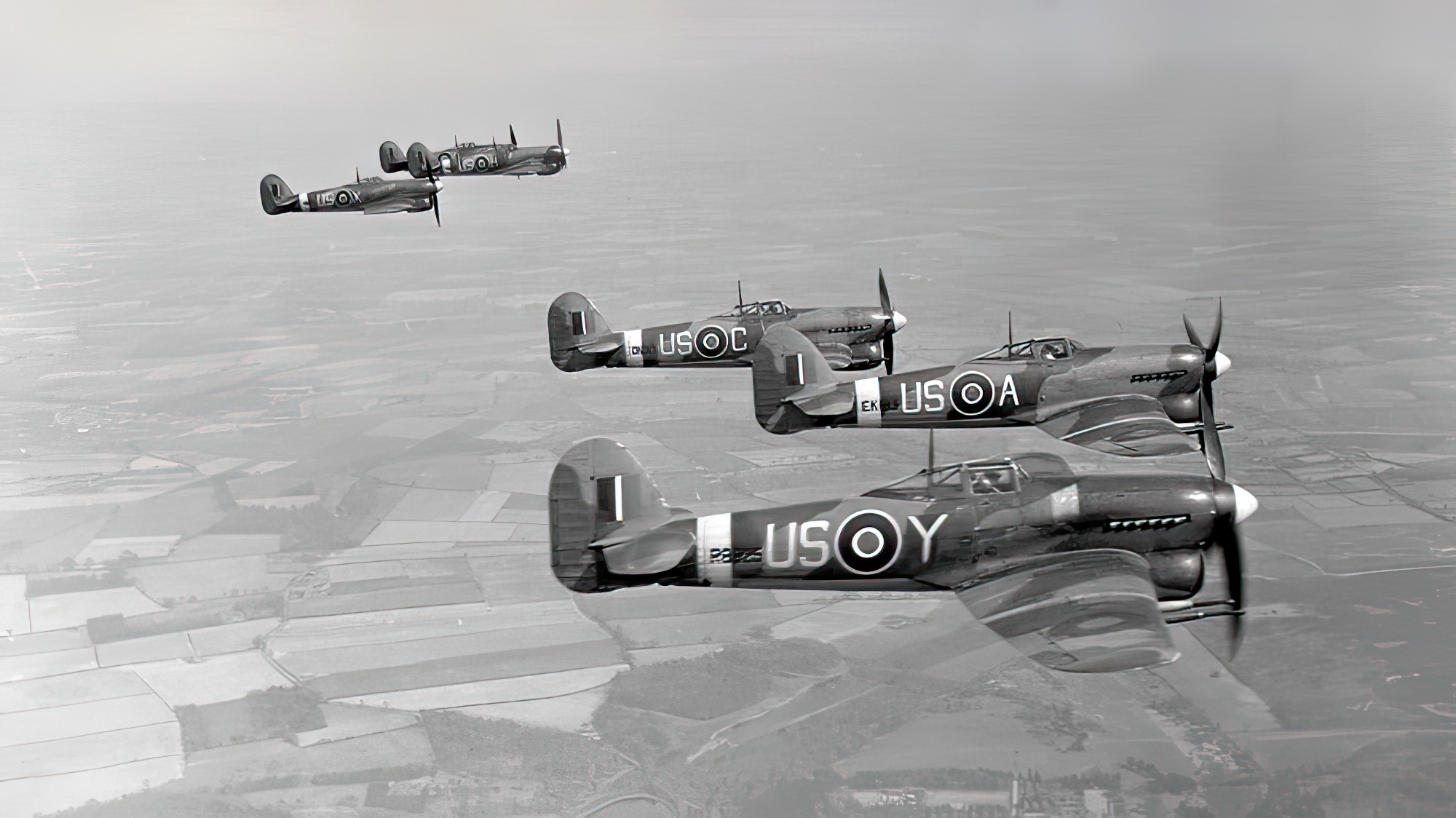
A legacy of power
The Hawker Typhoon was retired shortly after the end of World War II, as newer aircraft arrived to satisfy the evolving needs of the postwar period. The Typhoon left a lasting legacy as a highly effective ground attack aircraft, renowned for its durability, speed, and firepower despite its relatively brief service life.


